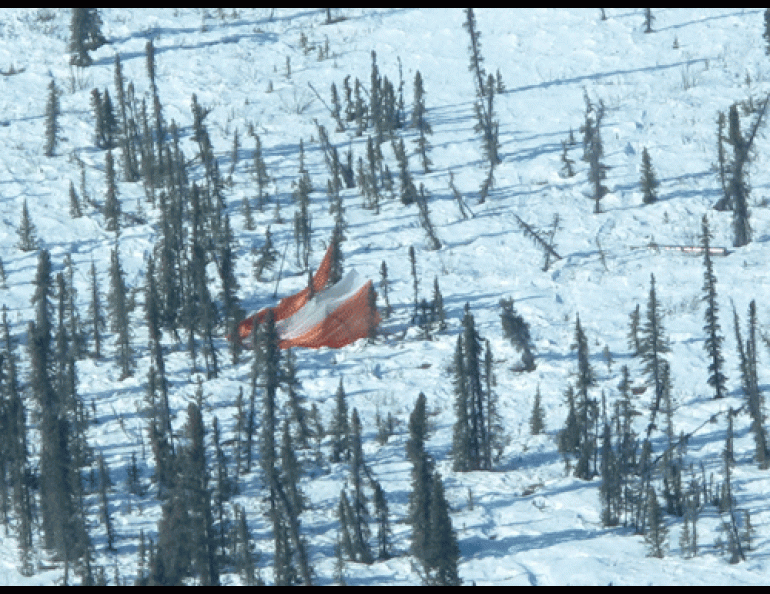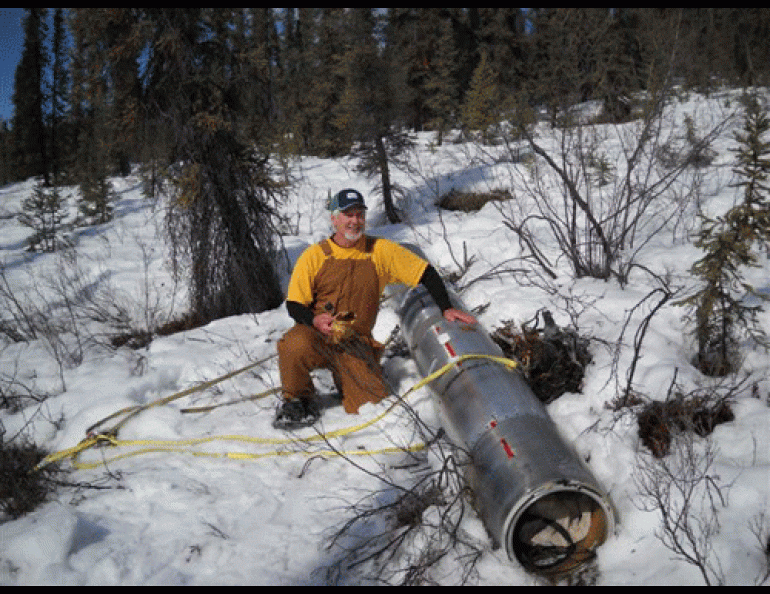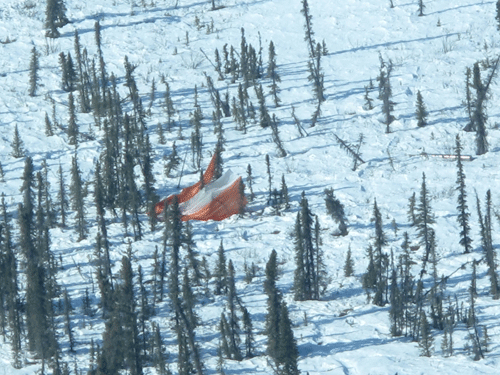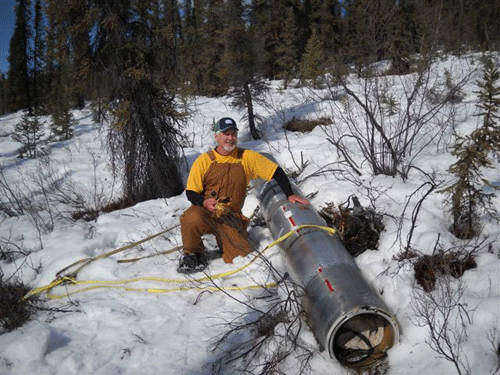

A new era of rocket recovery in the far north
NEAR ACKERMAN LAKE, NORTHWEST OF VENETIE — “Brian, the chute’s right there,” Chuck Brodell says from the middle seat of a Cessna Caravan.
Brian Lawson, who has found many rocket parts over the years during his work for Poker Flat Research Range, looks out his window and sees an orange and white parachute draped over black spruce trees near a small arctic creek. He also catches a glint of silver from a metal cylinder near the parachute. It’s the brains of a rocket, also known as a payload, that launched just after midnight on an engineering test mission from Chatanika, about 170 miles south.
The pilot banks the plane and circles the chute. His seven passengers — including NASA engineer Brodell, the lead scientist on the rocket mission — lean toward the windows with their cameras.
Lawson, in the front seat next to the pilot, presses the button of a SPOT satellite transmitter to mark the location. In two days, a helicopter will return, land, and two men will attach the payload via cable, on which it will ride back to the range in Chatanika.
Part of the day’s mission is complete. With the payload found, it is time to search for the rocket motor, a 20-foot long tube of metal that burned solid fuel to help arc the rocket out of the atmosphere. The spent rocket motor is more difficult to find than the payload because it has no parachute and GPS devices will not survive the motor’s impact.
“Picking it up’s not the hard part,” Lawson said in Fairbanks right before the flight. “Finding it’s the hard part.”
Rocket technicians had painted the motor orange to help in the search, and had also installed fluorescent streamers and strobe lights that ejected before impact. Lawson and his wife and coworker Kay had taken an early morning flight to Ackerman Lake to search for the strobes in the twilight. But they and the pilot didn’t see them. So, hours later, eight pairs of eyes squinted out the Cessna’s windows, looking for a burst of orange on the black-and-white landscape.
“The motor could be anywhere from here to Ackerman Lake,” Lawson yells over the drone of the motor. “That’s about nine miles away.”
For two hours, the pilot flies back and forth between the lake and the resting site of the payload. The searchers see spruce trees, drifted snow, and caribou walking the frozen surface of lakes, but no rocket motor.
Lawson calls off the search for the day and asks the pilot to fly to Fort Yukon, where the men take a short break on the runway before returning to Fairbanks. The searchers will wait until after the snow melts to resume the search.
The recovery effort of the last of three rockets to launch from Poker Flat in 2011 was part of a campaign by NASA officials to start a new era of rocket operations in which the collection of rocket parts becomes standard operating procedure for the range.
“It’s the right thing to do, to get that stuff out of there,” said NASA’s John Hickman at a public meeting in Fairbanks. The meeting was held in advance of an Environmental Impact Statement being written in consideration of continuing the NASA Sounding Rockets Program operated at Poker Flat. The University of Alaska owns the range and the Geophysical Institute manages the facility, located about 30 miles north of Fairbanks.
The EIS, which should be completed in 2012, is underway in part because of concerns from land managers at Yukon Flats National Wildlife Refuge and the Arctic National Wildlife Refuge, as well as environmental groups.
“At the bare minimum, can you keep (rocket parts) out of the wilderness?” Pam Miller of the Northern Alaska Environmental Center in Fairbanks said after one of the public meetings in Fairbanks. “Mostly, we’re just glad they’re looking at alternatives.”
As part of the effort to recover rocket parts, NASA has announced reward payments as part of its “Clean Range Policy.” The agency will pay $1,200 for location data on rocket motors and payloads that have not been reported before, and $500 for smaller pieces of debris. Finders will need to return the latter, such as nose cones and doors, to the range in Chatanika. Poker Flat Research Range Operations Controller Kathe Rich said that range officials will pay people who provide the latitude and longitude coordinates of rocket parts that are not already in her database for recovery. If the rocket parts are on village land, there will be an additional payment to Native village councils, she said.





